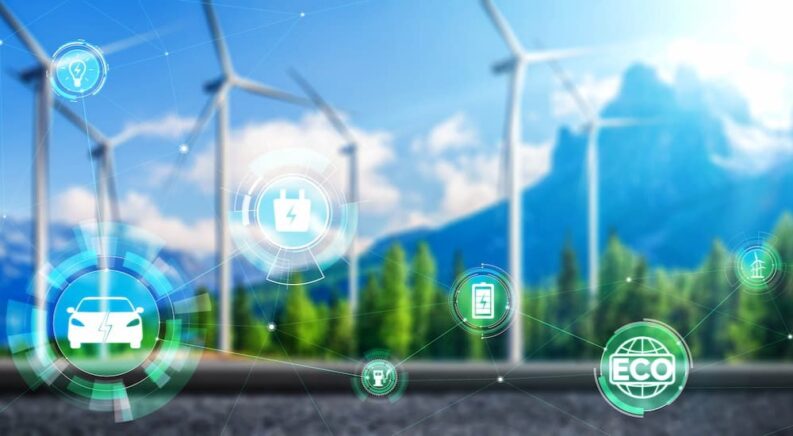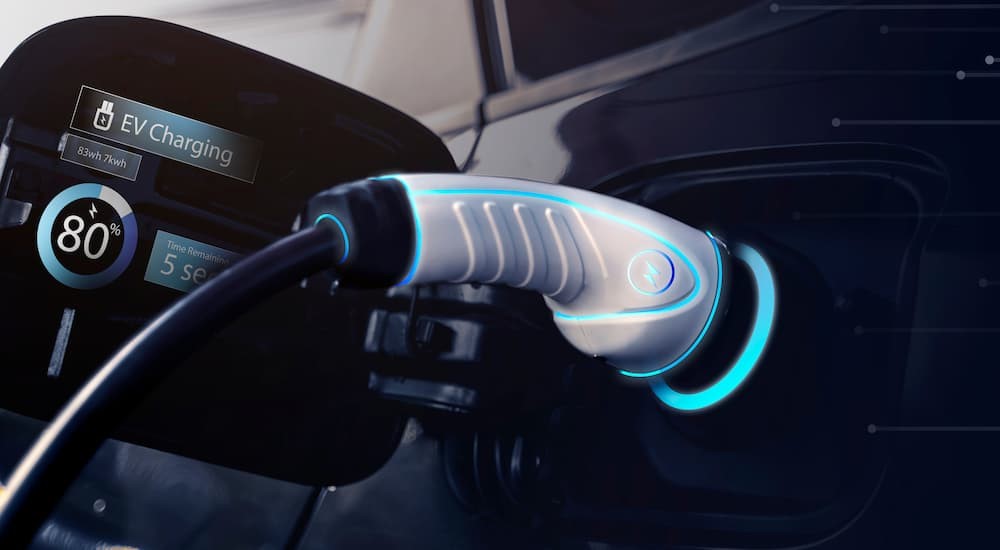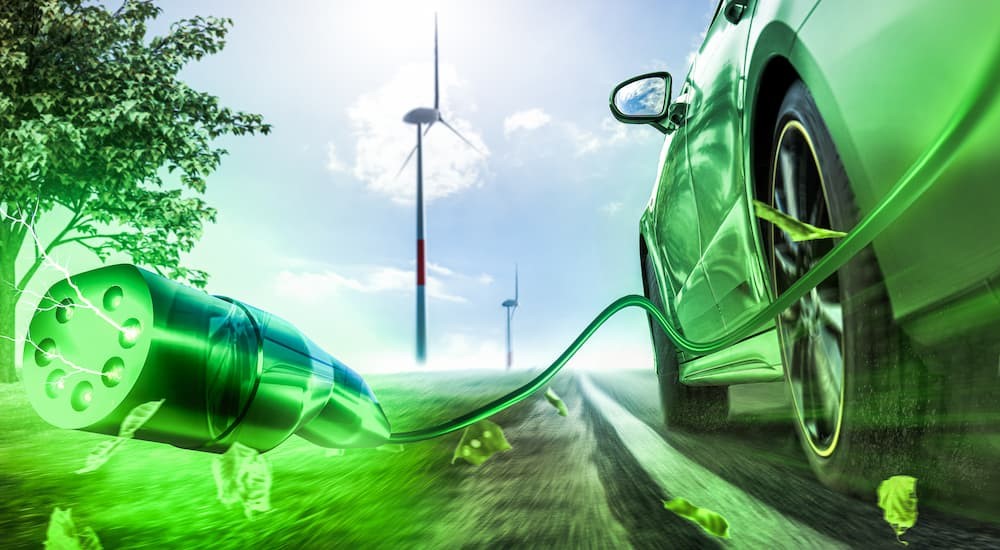As we head into spring, it’s a good time to check back on some recent and current auto news. Electric vehicles continue to make headlines, with both the US pursuing new EV infrastructure goals and the European Union setting a hard deadline for sunsetting fossil fuel-powered vehicles. We’ll also fact-check a new hit HBO series and see how they might have been fudging the truth regarding gasoline’s post-apocalyptic longevity. Read on for some of the top headlines while we wait for everything to thaw out after a long winter, and don’t forget to make an appointment to get those winter tires changed out ASAP.
EV Charging Networks Gain Steam
The lack of electric vehicle (EV) charging stations is one of the biggest hurdles to widespread EV adoption, with half of US consumers citing it as a major concern. In a bid to ease the nation toward its electrified future, the Biden Administration recently announced increased federal funding for zero-emission vehicle corridors throughout the country. Part of the $7.5 billion Bipartisan Infrastructure Law (BIL) passed in late 2021, and the effort is now beginning in earnest as stakeholders pave the way to begin work on seven projects that will serve drivers across 23 states.
In early February, the Administration debuted a new, free resource to help rural communities take full advantage of the new EV charging program—the largest such effort in the country’s history—that will see $4.75 billion distributed to individual states with another $2.5 billion doled out through a competitive grant program. Dubbed Charging Forward: A Toolkit for Planning and Funding Rural Electric Mobility Infrastructure, the guide outlines best practices and tips to ensure rural America is not left out of the coming EV revolution. From financing and federal funding to air quality improvement and more, this guide will provide a roadmap for EV charging access that will allow these communities to take full advantage of the $7.5 billion program.
“Drivers in rural areas often have the longest commutes and spend the most money on gas, which means big benefits from having access to electric cars and pickup trucks if they are affordable and easy to charge where they live and drive,” said Secretary Pete Buttigieg. “The investments in the President’s Bipartisan Infrastructure Law for a national EV charging network are an important step toward ensuring that EVs aren’t a luxury item and that everyone in America can benefit from clean transportation.”
The ultimate goal is to install 500,000 public chargers throughout the country, though some experts fear that number might still be far too low. In a study by McKinsey & Company, the consulting group estimated that the US would need upwards of 1.2 million public and 28 million private at-home chargers by 2030, when half of the vehicles sold are expected to be EVs. There are some clever solutions in the works to meet this demand, such as striking public-private partnerships with industry stakeholders. The Biden Administration recently announced one such collaboration, teaming up with EV giant Tesla to open a portion of its Supercharger and Destination Charger network to non-Tesla vehicles. This effort will see drivers gain 7,500 new charging station options by 2024, including 3,500 fast-charging 250 kW Superchargers.
Other big names in the auto and energy sectors are also gearing up for new EV charging demand, with Hertz and BP recently announcing a joint campaign to bring fast charging stations to Hertz rental locations across the country. Part of BP’s $1 billion investment in EV infrastructure, the fast-charging installations will debut in major cities like Boston, Chicago, Denver, Miami, New York, and Atlanta. These EV charging hubs will be open to Hertz rental customers as well as rideshare and taxi drivers and the general driving public, and should go a long way in helping Hertz to achieve its goal of electrifying 25 percent of its fleet by 2023. BP’s EV charger plans are even more ambitious, with the oil giant making a major investment in alternative fuels that will see them christen 100,000 EV charging stations around the world by 2030.
EU Rolls Out Ambitious EV Goal
In other EV news, the European Parliament recently approved a new law that could bring some fundamental changes to the highways and byways of the 27-country bloc. According to a report from Reuters, the European Parliament will ban the sale of any new carbon-emitting vehicles as of 2035, paving the way for the region to meet an ambitious goal of becoming a 100% climate-neutral economy by 2050. It’s easily the most ambitious such rule to date, and one that could see European streets devoid of new, gas-powered vehicles within a couple of decades. In addition to the ban on CO2-emitting vehicles, the EU will also seek to cut 50% of CO2 emissions from new cars compared to 2021 levels. That’s a significant increase from the current goal of a 37.5% emissions cut, but supporters believe it is necessary if the EU is to meet its 2050 goal.
“Today’s vote is a historic vote for the ecological transition,” said Karima Delli, chair of the European Parliament’s transport committee. “It is a victory for our planet and our populations.”
This new law will apply to many of the most common vehicles on the road, though some exceptions have been made for the time being. The rules around larger freight and passenger vehicles are still being debated, with lawmakers seeking altered timetables for those classes. Trucks weighing more than five tons—and long-distance passenger buses weighing more than 7.5 tons—would have to reduce emissions by 45% compared to 2019 levels by 2030, followed by 65% by 2035 and 90% by 2040. City buses would also have to be emissions-free by 2030, which is a particularly ambitious goal in a region where public transportation is so crucial.
Lawmakers have cited the potential economic boon of the new rule, which they hope will offset any costs incurred as part of the transition away from traditional internal combustion vehicles. “The operating costs of an electric vehicle are already lower than the operating costs of a vehicle with an internal combustion engine,” said Jan Huitema, the European Parliament’s lead negotiator on the new rules.
HBO Show Flunks Fuel 101
Just imagine driving through the city with no traffic—and no traffic lights—to slow you down. It might sound like a motorist’s dream until you factor in the fungally infected zombies looking to make you their next meal. HBO’s new post-apocalyptic series The Last of Us, based on the hit video game of the same name, sees Pedro Pascal and Bella Ramsey roaming through a ruined US 20 years after a lethal plague swept the globe. While we won’t share any spoilers, the pair sure does a lot of traveling, starting out from Boston with vague plans to head out west.
While the show is obviously a work of fiction, it hasn’t stopped some attentive car enthusiasts from pointing out a major plot hole in the series. In the show’s fourth episode, “Please Hold to My Hand,” Joel (Pascal) is seen siphoning gas from a car to source fuel for the duo’s cross-country journey in a 2001 Chevy S10. While the character does make a slight concession to reality by mentioning that “gas breaks down over time” and “this stuff is almost water,” that explanation doesn’t pass muster for those in the know (though it’s still a lot more excusable than letting a Starbucks cup sneak into a shot).
So how long does gasoline last? Twenty years certainly seems like a bit of a stretch, though it’s understandable from a plot perspective why the creators wouldn’t ask us to come along for a walking-pace journey across the country. Modern gasoline, which is usually a mixture of up to 150 different types of hydrocarbons and compounds, typically has a shelf life of between six months and three years—but it really depends on how it’s been stored. When kept in the tank of a vehicle, as seen on the show, gasoline starts to oxidize, evaporate, and otherwise break down. In three to six months’ time, the gas will see seriously compromised combustibility; and while it might burn, it’ll be much less efficient. Expired gas can even start to take on a gummy texture over time, which runs the risk of clogging up vital engine parts and causing serious damage—a major issue when the closest mechanic is now half-mushroom.
That schedule is even more accelerated for gasoline that contains a high percentage of ethanol, which not only starts to break down after only a month but can absorb moisture and increase the likelihood of corrosion within your fuel lines. If you’re predicting a coming zombie apocalypse—or are just looking to extend the life of your fuel—there are a few simple tricks you can follow. Fuel stabilizers can add between one and three years to gasoline’s shelf life, which is why so many drivers turn to such additives when it comes time to put their seasonal vehicles away for the year. Diesel fuel is a bit hardier than regular old gasoline, boasting a shelf life of around 12 months without any additives. It’s still a far cry from the two-decade-old fuel Joel sources in the show, but it would probably be the post-collapse fuel of choice as diesel (or at least a kind of biodiesel) would be much easier to produce with minimal equipment.






